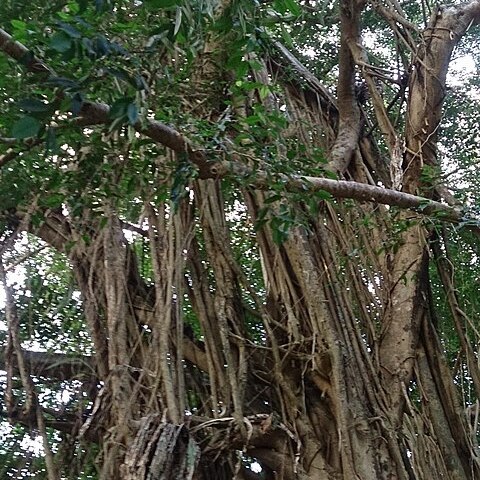Trees, large. Branches with many aerial roots which develop into secondary trunks (“banyan”); branchlets dark brown, glabrous. Stipules to 1.2 cm. Leaves ± distichous; petiole 0.5-2 cm, glabrous, drying blackish; leaf blade lanceolate-elliptic, 5-12 × 2-5.5 cm, ± leathery, glabrous, abaxially with cystoliths, base cuneate, margin entire, apex ± acute to almost acuminate; basal lateral veins 1/4-1/3 length of leaf-blade, secondary veins 6-9 on each side of midvein, parallel, anastomosing near margin, and slightly raised on both surfaces, tertiary veins reticulate. Figs axillary on leafy branchlets, paired, dark cherry-red to crimson-purple, ± globose to pear-shaped, 0.9-1.3 cm in diam., glabrous, base ± narrowed into a short often obscure stalk, apical pore slightly sunken, bracts minute, sessile; involucral bracts 2(or 3), caducous or obscure, ca. 0.5 × 0.5 mm. Male, gall, and female flowers within same fig. Male flowers: few, near apical pore; pedicel 0.5-2 mm; calyx lobes 3; stamen 1. Gall flowers: pedicel to 2 mm; ovary without any red, globose. Female flowers: sepals 4; ovary without red mark; stigma apical, long. Achenes ovoid, smooth. Fl. and fr. May-Oct.

